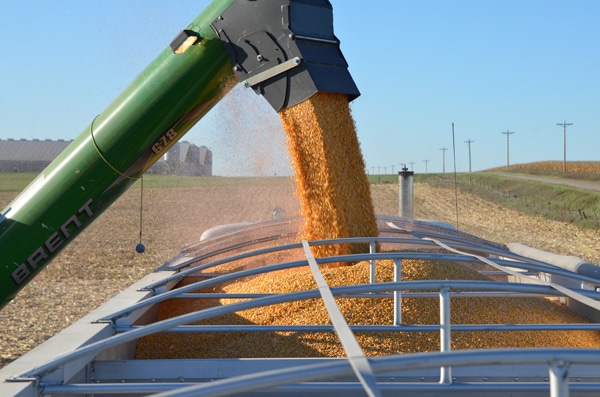October 8, 2012

Prices over the past two months for corn and the past month for soybeans appear to be in the classic “short-crop, long-tail” pattern where prices peak early in a year of sharply lower production and then decline in the post-harvest period as the smaller supplies get rationed and production rebounds in the following year, according to University of Illinois Agricultural Economist Darrel Good.
Good reports that the December 2012 corn futures declined by $1.44 (17%) from the high on Aug. 10 to the recent low on Sept. 28. That contract has managed a recovery of about 40¢ so far this month. November 2012 soybean futures declined by $2.85 (16%) from the high on Sept. 4 to the low on Oct. 3 and have rebounded about 45¢ since then.
“A change in the trend of lower prices will require an additional supply shock or evidence that supplies have not been sufficiently rationed,” Good says. “On the supply side for corn, prospects of a bumper crop in China and expectations that production in Argentina will rebound and Brazilian production will remain large in 2013 continue to weigh on U.S. export prospects.”
Good says that expectations of substantial (75 million bushels or more) imports of corn into the United States this year also offset some of the concerns about the shortfall in the U.S. crop.
“Declining production prospects for the Australian wheat crop and dryness in some U.S. winter wheat areas have not provided much support for corn prices to date,” Good says. “For soybeans, expectations are for a sharp recovery in South American soybean production to record levels in 2013, providing sufficient world supplies in the last half of the 2012-2013 marketing year.
“Declining prospects for the current Canadian canola crop have not resulted in much support for soybean prices,” Good continues. “With expectations of very large crops in South America in 2013, some supply shocks are still possible, but there are no immediate threats to those crops.”
In the short run, the USDA’s forecast of the size of the U.S. corn and soybean crops to be released on Oct. 11 will be the most important supply information, Good says.
“There are growing expectations that the forecast of the U.S average soybean yield will be increased, adding as much as 175 million bushels to the forecast of crop size,” Good says. “For corn, expectations about crop size are more mixed, with yield expectations running from slightly below the September forecast to as much as 5 bu. above that forecast. The estimate of planted acres is expected to exceed the June estimate, but there is much more uncertainty about the estimate of acreage harvested for grain. The USDA has already indicated that the difference between planted acreage and acreage harvested for grain will be larger than normal, but the October report will provide more information about the likely magnitude of that difference. For both corn and soybeans, history suggests that the October production forecasts will be reasonably close to the final estimates.”
For corn consumption, the pace of exports accelerated in September but remained below the rate needed to reach even the very small USDA forecast for the year.
“New export sales during September were extremely small so that the magnitude of outstanding sales on Sept. 27 was 42% smaller than on the same date last year,” Good says. “Weekly ethanol production during September averaged about 6% less than in September 2011, and was 9% less in the week that ended Sept. 28. Production is running slightly ahead of the pace implied by the USDA’s forecast of a 10% reduction in the use of corn for ethanol during the current marketing year,” he says.
According to Good, corn prices got a temporary boost from the USDA’s estimate of Sept. 1 corn stocks that seemed to imply a higher-than-expected rate of feeding. However, he says there has been a growing understanding that the stocks estimate revealed little about the pace of corn feeding since so much new-crop corn was available before Sept. 1.
“As a whole, the current pace of corn consumption suggests that the smaller supplies are being sufficiently rationed,” Good says.
For soybeans, the very rapid pace of export sales has been widely recognized, he says.
“As of Sept. 27, U.S. export commitments accounted for nearly 82% of the USDA’s forecast of exports for the year, with China as the primary buyer,” Good says. “The pace of sales obviously cannot be sustained but has not yet created concerns of shortages. The expectation of a large South American crop in 2013, ideas that China has already bought more than the usual share of its needs, and the possibility that the U.S. could import soybeans and/or soybean meal next summer if needed imply sufficient supplies.”
On the domestic side, the estimated size of the soybean crush in September is not yet available.
“While corn and soybean prices have declined sharply from their peaks, prices are still very high by any measure,” Good says. “The pace at which prices transition to lower levels will be determined by a number of factors, beginning with the USDA’s October production forecasts.”
You May Also Like




